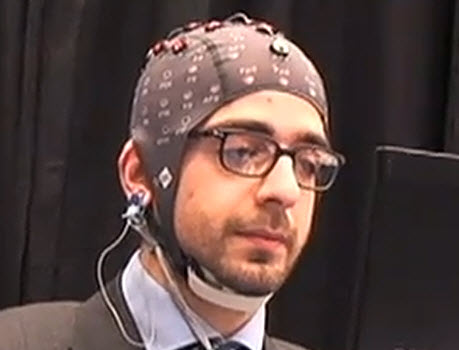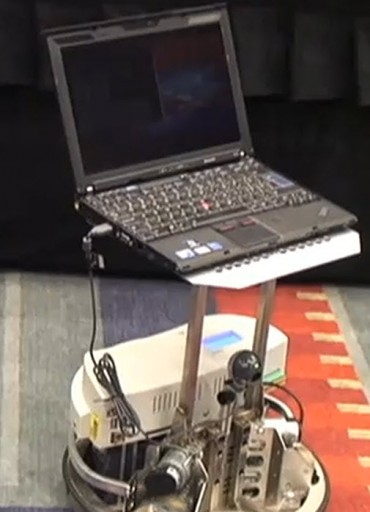How to mentally operate an autonomous robot
February 21, 2011
A robot driven by mental commands that can help a person constrained to a bed communicate with loved ones and expand their social interactions and a way to control an artificial arm, but through the brain’s motor cortex (not from neurons in the arm itself) were among the innovations shown at press briefing Friday at the American Association for the Advancement of Science 2011 annual meeting in Washington, D.C.
Ecole Polytechnique Fédérale de Lausanne (EPFL) scientists demonstrated a study in which volunteers connected to a BCI are asked to read, speak, or read aloud while simultaneously delivering as many left and right commands as possible or delivering a no-command. By using statistical analysis programmed by the scientists, Millán’s BCI can automatically distinguish between left and right commands and learn when each subject is sending one of these versus a no-command. In other words, the machine learns to read the subject’s mental intention. The result is that users can mentally relax and also execute secondary tasks while controlling the BCI.
This Shared Control approach to facilitating human-robot interactions employs image sensors and image-processing to avoid obstacles. According to Millán, however, Shared Control by itself isn’t enough to let an operator to rest or concentrate on more than one command at once, limiting long-term use. Millán’s new work complements research on Shared Control and makes multitasking a reality while at the same time allowing users to reduce their workload.
His trick is in decoding the signals coming from EEG readings on the scalp — readings that represent the activity of millions of neurons at low resolution. By incorporating statistical analysis, or probability theory, his BCI allows for both targeted control — maneuvering around an obstacle — and more precise tasks, such as staying on a target. It also makes it easier to give simple commands like “go straight” that need to be executed over longer periods of time without having to focus on giving the same command over and over again.
.


